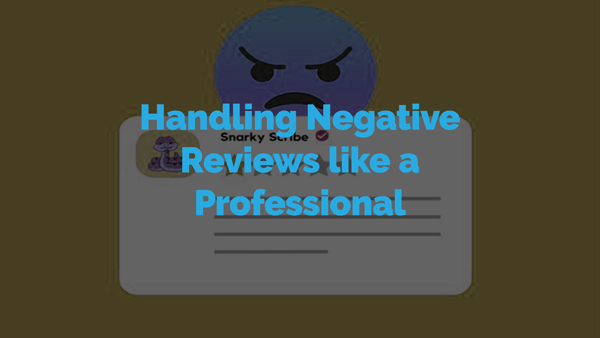Are you hoping to improve your SEO ranking by writing blog posts? When writing for SEO, there’s more to it than just belting out some text in the hopes of an increased Google ranking. Google loves content, but it needs to be quality content and written for the purpose of SEO. But it also needs to appeal to your audience – you never just want to add content to your website without your readers in mind. So, we’ve put together some tips that will help you write the perfect blog for SEO and for your readers.
1 – Think about your audience’s search
Before putting the effort into writing a blog, it’s important to stop and consider how it fits into a search query. What question are you answering? Where in the buying cycle is the consumer? What are they likely to be searching for? What’s the next step you want your audience to take? Considering questions like these ensure your blog content matches the search intent of your customers. To better understand how this works, try searching for the terms you expect your audience will be searching for. See what comes up as a suggestion, and use that content as your guide.
2 – Structure your post
Your blog posts need to be reader-friendly and search engine-friendly, which can be difficult to balance. It helps if your content has a strong structure. Give your posts an introduction and a conclusion, headings and subheadings, break the content up with images and lists. Using all these elements in your post gives you plenty of space to place your ever-important keywords, but it also makes your posts easier to read. Having a structured post will also make writing a lot easier for you. You can plot out how you intend your story to flow with bullet points before sitting down to write it.
3 – Use keywords related to your topic
Once upon a time, filling your content with the same keyword was the ticket to SEO. These days, Google is a lot smarter. Google doesn’t reward using the same keyword over and over as it used to. Now, Google scans for topics. To recognise a topic, Google will look out for synonyms and variations of your keywords and keyphrases. So, make sure you’re using a variety of words that relate to the overall topic and your user’s search intent.
4 – Consider the length of your article
Do you know how long your blog posts should be for SEO? The length of your article depends on three factors: your objective, your visitors and what’s good for SEO. The absolute minimum for a blog post is 300 words. Google does prefer longer articles, however, a longer post can deter your audience from reading the whole thing. If your objective is to write high-quality, cornerstone content for SEO, the longer the better – over 1000 words. However, if you’re trying to balance SEO with readability, you may want to consider some more manageable lengths; around 500 or 600 words is ideal. Regardless of length, make sure you’re using your keyphrase and variations throughout the post.
5 – Remember to link to previous content
When you publish a new blog post, don’t forget to link to other content on your site. When writing posts for your niche, you’ll likely end up covering related topics that may have already been discussed in a previous post. Whenever the opportunity presents itself, link to other posts or relevant pages on your website. Not only does this increase your authority with the reader, but Google also considers your internal linking as part of your search engine ranking.
6 – Triple check your grammar and spelling
Being an authority in your niche is vital for the success of your online business, but it’s hard to look like the expert when you’ve got spelling and grammar mistakes. It may sound obvious, but double- and triple-check your grammar and spelling. There is software like Grammarly and even browser extensions that can help detect your mistakes. Otherwise, read over it again and again, or better, get someone else to check it. Small spelling and grammar mistakes are bound to happen – they happen to the best of us – but it can hurt your authority if they’re happening all the time.
7 – Add new blogs regularly
Google loves to see you’re adding new content to your website, so posting regularly ensures Google is constantly checking your site for new content. Naturally, the more new content, the better, but there are two things to consider when planning your posting strategy: the resources available for writing, and the quality of the content written. In an ideal world, you would be posting a few long posts and a few shorter posts every week. In reality, if your team can’t write blog posts every day, it can’t be helped. And, of course, if the content isn’t high quality, neither Google nor your readers will be interested. Posting for the sake of posting isn’t going to help you. For a small business, aim for at least one post every week or two. When it comes to SEO, anything is better than nothing, but you never want to post rubbish.
8 – Install an SEO plugin
Figuring out if your blogs are effective for SEO can be difficult, but luckily, some plugins can help you out. The most well-known is Yoast SEO, but there’s also All-in-one which has been around a long time, and a new plugin which seems quite powerful called Rank Math – these will help you figure out what’s working and what isn’t. They will help you estimate what phrases you will rank for and give you tips to improve. They’re great for helping you optimise elements that you may not have thought of otherwise, such as images, alt text and internal linking.
Conclusion
And those are our tips for writing better blogs for SEO and your readers. Hopefully, you’ve gleaned some valuable insights and you’re ready to write some Google gold. However, if you’d rather save time and stick to doing what you do best, give SBIM a call. We have over 10 years of experience, and more than 500 happy customers, so we can help you develop an effective marketing strategy for an effortless flow of customers. Go book a call a now, or give us a call on 1300 781 609. Thanks for watching, we’ll see you next time.






